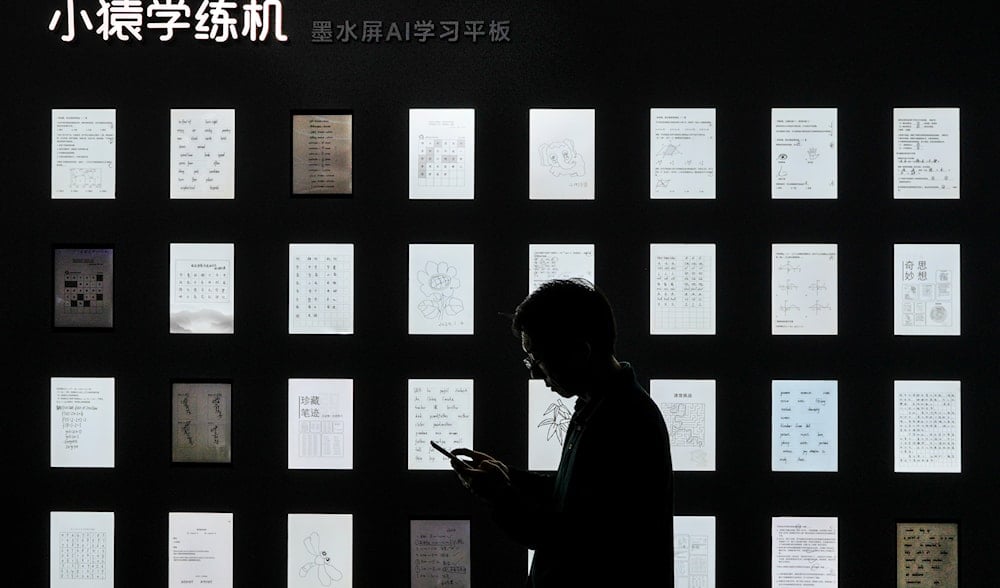Nvidia AI chips repair industry booms in China following US export ban
China’s underground tech industry is witnessing a surge in Nvidia AI chips repair shops as smuggled H100 and A100 GPUs, banned under US export rules, flood the market.
-

A visitor walks by an exhibition booth during the 2024 The World Artificial Intelligence Conference (WAIC) & High-Level Meeting on Global AI Governance at the Shanghai Expo Center Multifunction Hall in Shanghai China, Thursday, July 4, 2024. (AP Photo/Andy Wong)
The underground market for advanced Nvidia AI chips has rapidly expanded in China, creating escalating demand for repair services of this banned hardware. Despite US export restrictions prohibiting the sale of high-performance chips like the H100 and A100 to China, a growing network of specialized firms, primarily concentrated in Shenzhen, now focuses exclusively on repairing these devices.
According to Reuters, the H100 and A100 GPUs, which are essential for training large AI models, have entered China through illicit channels and are being used extensively in AI development projects. These units often operate continuously in data centers, leading to accelerated wear and higher failure rates. With Nvidia legally prohibited from providing after-sales support for restricted products in China, local firms have emerged to fill this critical service gap.
How Chinese firms access banned Nvidia GPUs
The repair surge provides concrete evidence of widespread GPU smuggling into China, with specialized firms now refurbishing hundreds of chips monthly. One Shenzhen-based company, which initially focused on gaming GPU repairs for 15 years, has pivoted to handle up to 500 Nvidia AI chips per month. Another provider, which previously operated GPU rental services, has completely shifted its business model to repair approximately 200 units monthly.
Reuters reports that these firms offer comprehensive diagnostic and repair services, including software testing, fan and memory repairs, circuit board rework, and thermal interface replacements. Many have invested in data center-like facilities to simulate operational environments and validate repairs under realistic conditions. Some facilities can accommodate up to 256 servers, creating testing environments that mirror actual deployment scenarios.
Challenges with alternative chipsets like the H20
The US recently permitted Nvidia to sell its H20 chipset to China, a deliberately weakened product designed to comply with export controls. However, the H20 presents significant limitations compared to banned alternatives. A server containing eight H20 GPUs costs over 1 million yuan ($139,400), making it financially unattractive for firms pursuing cutting-edge AI development.
Despite notable improvements in domestic alternatives such as Huawei's Ascend 910C and 920 processors, these chips still lag behind Nvidia's offerings in critical areas, including software ecosystem compatibility and operational stability. Persistent issues with firmware reliability, driver optimization, and network integration continue to discourage widespread adoption among Chinese AI developers.
Cost and complexity of repairing H100 and A100 GPUs
Repairing these sophisticated chips requires specialized expertise and equipment. According to Reuters, a single GPU repair typically costs between 10,000 and 20,000 yuan ($1,400 to $2,800), representing roughly 10% of the chip's original purchase price. Given the extraordinary value of these chips, particularly the H100 and the newer B200 models, this cost is considered economically viable by operators of data centers and AI research facilities.
Technical challenges commonly addressed include voltage regulator malfunctions, memory controller failures, and delamination of high-bandwidth memory stacks caused by prolonged high-temperature operation. Shenzhen's repair specialists often advertise advanced services such as bare-die re-balling, custom firmware modifications, and thermal solution upgrades to extend chip operational life beyond original specifications.
US legislation to address smuggling concerns
Amid growing concern over illegal hardware imports, US lawmakers have proposed comprehensive legislation to mandate GPS-style tracking systems for all advanced chipsets. These measures aim to establish complete supply chain visibility and curb the flow of banned hardware into China. The Trump administration has strongly endorsed these initiatives, seeking to implement stricter post-sale monitoring and enforcement mechanisms.
Intelligence reports indicate that over $1 billion worth of Nvidia chips, including the latest B200, H100, and H200 models, entered China within just three months in 2025, despite comprehensive export bans. These chips typically follow established smuggling routes through Hong Kong or Southeast Asian intermediaries, then enter Guangdong Province disguised as legitimate commercial shipments or consumer electronics.
While US policy explicitly aims to constrain China's AI capabilities by restricting access to critical semiconductor components, the emergence of this sophisticated repair ecosystem reveals the inherent limitations of such technological controls. As long as high-performance GPUs remain absolutely vital for competitive AI development, the black-market repair trade will likely persist and expand. The explosive growth in Nvidia AI chip repair services in China highlights a remarkably resilient and resourceful ecosystem that effectively circumvents international technology restrictions.

 4 Min Read
4 Min Read










